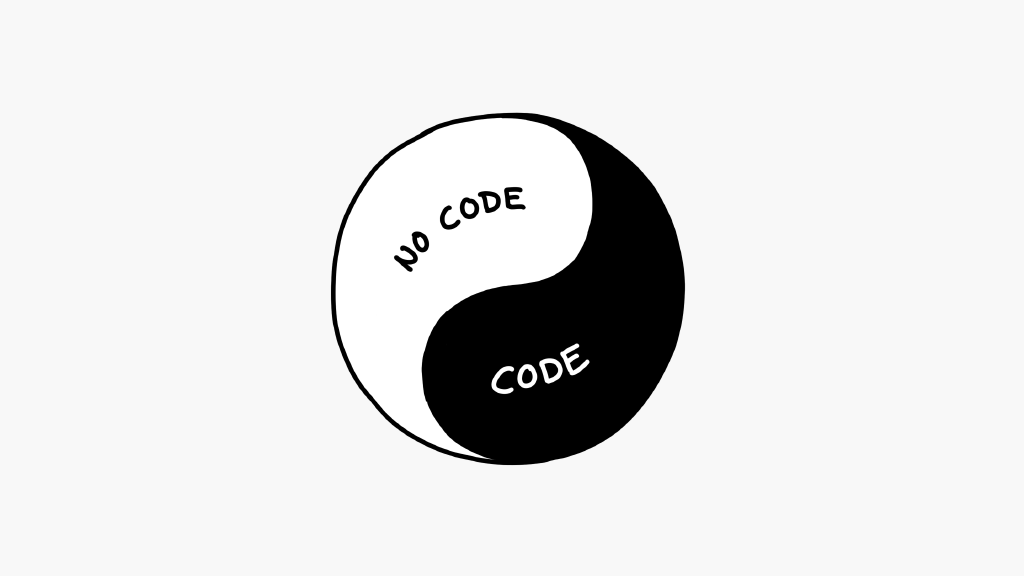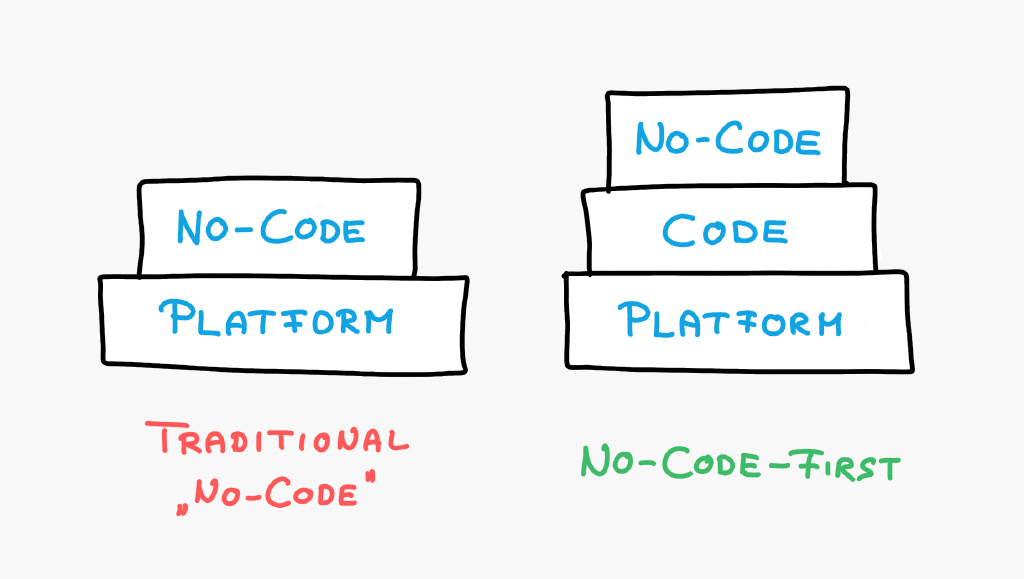
No-Code-First
speed, flexibility - pick two
No-code is great 99% of the time. We want to leverage that to move fast, yet we also don't want to hit walls. For the remaining 1%, we need the ability to build anything with custom code.
If you can code, you obviously crave the flexibility. If you can't, you still want the freedom of unlimited growth. Should you hit any of the walls of no-code, you don't want to hire a team of developers and start from scratch. You want the ability to find a developer to build that specific feature for you, while still keeping 99% of the project in no-code land.
For that, we need a platform where no-code and code are both first class citizens. We need the best of both worlds.
I call this approach no-code-first and I've been working on a no-code-first application platform called Boomla for many years now.
No-code vs no-code-first
Let me give you a simple architectural difference between the two approaches.

Traditionally, a no-code platform provides no-code tools only. The company behind it works on the platform layer while their customers are restricted to working in the no-code layer.
In the no-code-first world of Boomla, we provide an additional code layer in-between, that allows you to run code on the server. The no-code layer is in turn built on that code layer, making sure that everything you can do in no-code land is also possible in code. This gives you the ultimate freedom to build anything else on top of it that we haven't built ourselves.
No-code and code are both first class citizens
We wanted to make Boomla as flexible as possible, which required that both no-code and code become first-class citizens. This means that we should be able to mix-and-match no-code and code however we see fit. Obviously, this means that we would be using no-code wherever possible, and resort to code as necessary.
This means that we need the ability to:
embed code in no-code,
embed no-code in code, and
do anything in code that's possible in no-code (as stated before).
Let's see a demo for all of these.
No-code embeds code
A simple example would be having a no-code page layout that embeds a custom-coded element. Here is a demo.
Code embeds no-code
The inverse of the above would be creating a custom page layout in code and embedding a no-code element in it, for example a gallery.
No-code building blocks can be built in code
To demonstrate this, the entire no-code uikit package of Boomla is implemented in user-space code, so you could not only rebuild the elements yourself, they already are available as code.
No-code and code are highly integrated
In the above video, did you see the clear line between no-code and code? Probably not. They are so well integrated that the line between the two are effectively blurred.
That's not a coincidence. Boomla makes it incredibly easy to extend the platform, and any custom code you add truly feels like a first-class citizen on the platform.
Write a piece of code. Use it from no-code. Create a block of no-code. Use it from code.
Where we are
We have been working on Boomla in two stages. First, we created a no-code-first website builder that allows you to publish information, and now we are turning it into a no-code-first application platform that also allows you to capture data (via forms, etc.).
The website builder is available right now - go and take it for a spin. (The video demos show the capabilities of the website builder, so you can try those yourself.)
The application platform is in private beta, launching soon. I am looking for early adopters and any feedback, so please do reach out if you are interested.
You can find me on Twitter or email me via tibor.halter at platform domain.
Best,
Tibor
2022.12.02.
